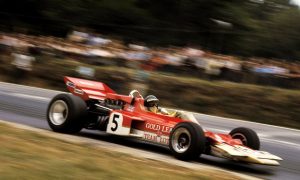MORE AIR FOR THE CAVALLINO
After evaluating a new engine cover at Silverstone two weeks ago, Ferrari tested another new design at Hockenheim. On the latter, the two wastegate exhaust pipes are mounted above the muffler and no longer on each side. One will remember that Renault had adopted an identical configuration in 2016, even if the pipe back then was simple.
Such a design is made possible by the fact that the SF71-H has a split rear wing support: the spacing between the two pillars provides the space needed for the two pipes of the wastegate.
Under the engine cover of the Ferrari one notices that the bottom pipe is only a kind of deviation of the upper pipe, which would circulate most of the gases discharged by the wastegate. By raising it, it is brought closer to the rear wing, which suggests that the Scuderia worked on blowing the underside of the rear wing.

© F1i
WHY?
As is well known, the main plane of the wing produces downforce thanks to a speed difference between the air that flows over the top surface and the air that goes underneath the underside: this is the – inverted – principle of an airplane wing. The faster the air flows under the wing, the higher the depression and the greater the downforce. Therefore, blowing an energized airflow – such as engine or wastegate exhaust gases – on the underside increases the pressure differential and thus the downforce.
In addition, the energized exhaust flow squeezes the “ambient” airflow that flows on the underside of the wing, helping to keep it attached to the surface. When the angle of attack of the rear wing is too pronounced, a stall may occur: the airflow that flows underneath the wing may become detached from the wing. Pointing the exhaust fumes to the underside of the wing therefore also reduces the risk of flow separation.

 '
'




